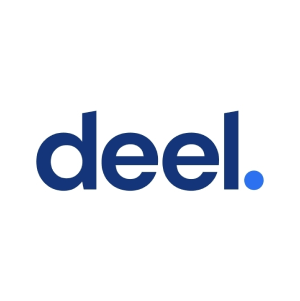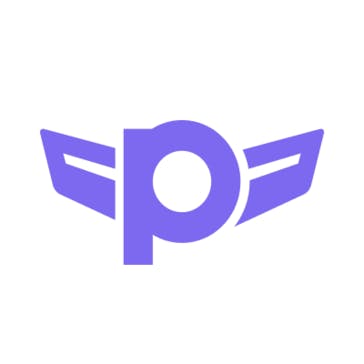Anthony Mironov, CEO of Wingspan, on why 1099s are eating payroll
 Jan-Erik Asplund
Jan-Erik Asplund

Background
In May 2023, we interviewed Anthony Mironov, CEO & co-founder of Wingspan ($14M Series A, A16Z) about the ongoing convergence around contractor payroll between Gusto, Rippling, Routable, and Ramp.
Last month, we reached back out to Anthony as Wingspan announced a $24M Series B (Touring Capital) and the launch of Wingspan Embed for building contractor payroll as a native integration in a HR or payroll platform.
Key points from our conversation via Sacra AI:
- One out of three US workers now does some form of contract or freelance work on a 1099—up from 10% in 2005—a trend that has accelerated & gone “upmarket” as the rise of frontier model AI labs has created huge demand to hire physics PhDs, software engineers, lawyers & others on short-term data labeling contracts. “People don't understand that the massive market for payroll is disintegrating and shifting to 1099s. That's only accelerating because of the demand on the business side. . . AI creates these new specialized roles that are perfect for contractors. The stronger economy gives workers confidence to go independent.”
- Standard back-office SaaS & payments tools (Chase Bill Pay, QuickBooks, Gusto) can handle 5-10 contractors fine, but at 50+ the operational burden explodes—insurance certificates need verification across dozens of formats, state-by-state compliance multiplies, and payment reconciliation becomes full-time work. "[I]nvestors look at their VC firm or portfolio companies with two to three contractors alongside 50 employees, and they think they're managing fine with their existing tools on Gusto or something. They're right. At that scale, you can hack it together with Bill Pay or whatever tool you’re using for payroll. . . The real market emerges when companies have 50, 100, 500-plus contractors. . . Those generic tools break down.”
- Payroll platforms, professional employer organizations (PEOs), and vertical SaaS platforms alike are all going after the opportunity to handle mixed W-2/1099 workforces to prevent churn & prevent payments leaking outside their platforms to Bill.com & Quickbooks, with the divergent approaches of building their own contractor rails (Rippling) vs. partnering with contractor payroll platforms like Wingspan (Insperity). "The lines between PEOs and HCM platforms, vertical SaaS platforms are blurring rapidly, even converging. . . HCM platforms are racing to add functionality beyond core payroll and benefits. Everybody wants to be an all-in-one solution. They want to own that customer.”
Questions
- Let's start with Wingspan and its evolution. You've definitely taken more on over time, going from a contractor-first platform, to helping businesses manage contractors, to partnering with professional employer organizations and HCM platform. Could you paint a picture of how Wingspan has evolved internally to take advantage of all the opportunities it's had?
- We last spoke in May 2023, and the macro picture was a little different. Since then, we've had the rise of AI. We've had the economy improving, at least in terms of a drop in inflation, some deregulation. Have any of these macro trends impacted businesses' adoption or use of contract or flexible work?
- Could you zoom out and talk about the ecosystem for payroll, benefits, and worker management? Can you paint a picture of what all the players are in the market? The PEOs, all-in-one HCM suites, vertical SaaS—how do these pieces fit together or overlap?
- You mentioned that the SMB market is relatively underpenetrated at 10%. What are the other 90% using to pay their workers?
- Wingspan is a purpose-built platform to pay and manage contractors. What specifically makes it difficult for an ADP or a next-gen platform like Rippling to meet the needs of contractors versus standard W-2 workers?
- What do investors and entrepreneurs often get wrong about the contractor management or payroll market? What are the misconceptions that you find yourself bumping up against all the time?
- Are you able to break down Wingspan's revenue streams and their relative importance? What has been the most recent growth driver even if it's not a big chunk of revenue today?
- In terms of AI, can you walk us through how you're layering or leveraging AI across the product?
- Let's move on to Insperity. It's a publicly traded PEO. Wingspan Embed is a modular white-label solution that will help Insperity’s customers manage contractors. What challenges do you think Insperity is trying to meet in working with Wingspan? Why not build it themselves?
- In terms of the contractor-first philosophy—how do you think about being contractor-first or serving contractors effectively when you're one step removed now in a partnership like the one with Insperity?
- You do customer support for the Insperity customers—the contractor being served through Insperity. You're fielding that part as well?
- Is this a model for future alliances? Or is there an element where Insperity's competitors might be wary about teaming up with Wingspan? Likewise, what happens if you want to move into an area that would be semi-competitive with Insperity, like the W2 or EoR space? How do you ensure that you retain optionality after a high-profile partnership like this?
- How do you see this evolving in terms of Insperity and companies like them in terms of the whole contractor wave? Do you think innovators will ride the wave and others won't? What's at stake besides incremental revenue for PEOs and large HCM platforms?
- Do you think that the tipping point for Insperity's customers is what we talked about earlier—once you get to 50 or 100 contractors, that's when the pain begins to be felt? Or are there other headaches that are more specific, like worker classification, that are more important than just compounding friction?
- When we talk about insurance and financial services add-ons, which as you mentioned earlier is a smaller but fast-growing part of the revenue, how does that work in a partnership like this? Is the partner equally interested in insurance and fintech add-ons or less so?
- Is it a thing that contractors have fewer options outside of, let's say, a Wingspan to access these products in an attractive way? Would you see maybe higher attach rates than you might see in a W-2 population for these kinds of products?
- Wingspan has processed over $3 billion in payments on the platform. That's a lot of scale. I'm curious about what benefits or what kind of new opportunities Wingspan has once it achieves greater scale. Do network effects begin to accelerate? Does that open opportunities that might not be available to you at a lower scale?
- In terms of adjacent markets, are you able to say anything about what's interesting, what's on your radar—markets that you think are interesting or underserved?
- Can you describe a couple of those add-on products? For example, add-on products that make contractors' lives easier, or fintech add-ons?
Interview
Let's start with Wingspan and its evolution. You've definitely taken more on over time, going from a contractor-first platform, to helping businesses manage contractors, to partnering with professional employer organizations and HCM platform. Could you paint a picture of how Wingspan has evolved internally to take advantage of all the opportunities it's had?
We’ve always had this really ambitious vision to reimagine flexible work and all of the complexities around it. We've always attacked the same problem—the friction at the intersection of companies and contractors—but our go-to-market has evolved strategically.
Starting contractor-first was our secret weapon. We built deep insights into how freelancers actually work, what breaks those workflows, and what they need to succeed. That experience and knowledge, those insights, became our competitive moat as we expanded to serve businesses.
The key insight: you can't fix contractor management without fixing the contractor experience. They're inseparable. When contractors struggle with payments or compliance, companies feel it as delays and increased administrative burden.
The evolution from a contractor-first to enterprise-ready platform created something unique. Our purpose-built platform truly works for both sides of the equation. But expanding a company's toolset is expensive: it means another vendor, another tool to learn, and not every company needs a dedicated tool for contractor management. Through these partnerships, we can bring powerful capabilities directly to companies through tools they're already using.
Our HCM partnerships are a natural next chapter of our journey—taking our proven solution and scaling it to millions of contractors. The thesis here was how do we get every contractor in the world on the platform and remove the administrative work for them.
We last spoke in May 2023, and the macro picture was a little different. Since then, we've had the rise of AI. We've had the economy improving, at least in terms of a drop in inflation, some deregulation. Have any of these macro trends impacted businesses' adoption or use of contract or flexible work?
The fundamentals powering this shift to contingent work haven't changed. People want and need flexibility, and companies need agility. Folks want to work independently, and that's increasing. Companies want to save money and work with a more flexible workforce in an increasing fashion, and these business models are popping up to service that need.
We see Wingspan as unlocking this type of work because historically, it's been too burdensome. The trends you call out are actually tailwinds. AI creates these new specialized roles that are perfect for contractors. The stronger economy gives workers confidence to go independent.
Fundamentally, contingent work is becoming more attractive every day, and that's why we're seeing our growth rates accelerate month over month, both at our customers and across our platform.
Could you zoom out and talk about the ecosystem for payroll, benefits, and worker management? Can you paint a picture of what all the players are in the market? The PEOs, all-in-one HCM suites, vertical SaaS—how do these pieces fit together or overlap?
There are lots of different ways to get paid, but getting paid is fundamentally essential because all consumer spending comes from a paycheck. You have to pay your car payments, your home mortgage, buy your supplies, pay for health insurance.
The lines between PEOs and HCM platforms, vertical SaaS platforms are blurring rapidly, even converging. We see PEOs investing heavily in technology while still largely focused on W-2 employees. The SMB payroll market is only 10% penetrated by PEOs and about 55% overall. ADP is a 75-year-old company and the gorilla in the market, but it has a tiny percent of market share relative to its $120B market cap. It’s a really fragmented and underpenetrated market.
HCM platforms are racing to add functionality beyond core payroll and benefits. Everybody wants to be an all-in-one solution. They want to own that customer.
We see the real momentum in two areas: global employment solutions overall—which would be EORs [Employer of Record organizations] and various flavors of global PEOs, a trend driven by remote work—and AP & spend management. The contractor economy needs purpose-built infrastructure — not retrofitted W-2 solutions.
Our PEO and HCM partnerships put us in a unique position because rather than competing with these platforms in various segments, we're extending their capabilities into the fastest-growing segment of the workforce, which is contractors.
You mentioned that the SMB market is relatively underpenetrated at 10%. What are the other 90% using to pay their workers?
Pen and paper. Somebody's CPA. They're literally running payroll manually. It's one of the reasons I got so excited about this market opportunity years ago.
Wingspan is a purpose-built platform to pay and manage contractors. What specifically makes it difficult for an ADP or a next-gen platform like Rippling to meet the needs of contractors versus standard W-2 workers?
First, there's a focus element. Their entire businesses and organizations are designed around the employee and employer relationship. Contractors have historically been seen as sitting somewhere between employees and vendors.
Second is a fundamental architecture problem. Contractors aren't employees; they're businesses. Even if their businesses are one person, the infrastructure for paying businesses and the compliance needs, the experience for those contractors, these are all very different from managing and paying employees.
It's about contractors working with multiple clients, clients working with multiple contractors, and the lifecycle management of this relationship. It's many-to-many and very fragmented. All-in-one HCM platforms are built with a specific company at the center of the universe, and W-2 employees orbiting around it. Their entire system — from their data models to the relationship models — assumes traditional one-to-one employment relationships. They monetize everything on a per-employee seat. They're selling modules that only make sense when you control someone's entire work environment. It's based on a different relationship.
Contractors operate in a different universe. They manage multiple client relationships. They invoice across companies. They are responsible for their own benefits and taxes. The platform needs to look closer to a Shopify than to traditional payroll to really remove the friction here.
What do investors and entrepreneurs often get wrong about the contractor management or payroll market? What are the misconceptions that you find yourself bumping up against all the time?
It's not obvious how drastic the workforce composition is changing from W-2s to 1099s. One out of three workers in the US are contracting to some extent today. But they don't always think of themselves as contractors or freelancers because the labels applied to them within different industries may be a little different. People don't understand that the massive market for payroll is shifting so quickly to 1099s. That's only accelerating because of the demand on the business side.
They underestimate the problem at scale because investors look at their VC firm or portfolio companies with two to three contractors alongside 50 employees, and they think they're managing fine with their existing tools on Gusto or something. They're right. At that scale, you can hack it together with Bill Pay or whatever tool you’re using for payroll, even with your bank — let’s say if you're using Chase or something.
But that's like saying you don't need Salesforce because a spreadsheet works fine for your first 20 customers. The real market emerges when companies have 50, 100, 500-plus contractors. That's when the complexity compounds—compliance across states, payment reconciliation, tax documentation, contractor experience at scale. Those generic tools break down.
More importantly, even companies that don't need dedicated contractor management would absolutely use it if it was embedded in their existing HCM or PEO. For instance, when we started Wingspan, like many small businesses, we were running things manually for contractors and using a payroll provider geared to SMBs. Then we started eating our own dog food - and realized how much better things could be if it were streamlined in one platform.
Are you able to break down Wingspan's revenue streams and their relative importance? What has been the most recent growth driver even if it's not a big chunk of revenue today?
We monetize software and fintech solutions to workers. We charge per paid contractor per month. For the fintech services to workers, we monetize that through various fintech workstreams. The split today is roughly 70% for software and 30% for fintech, and we see a lot of upside in the fintech monetization as the contractor network scales.
In terms of AI, can you walk us through how you're layering or leveraging AI across the product?
We're using AI to attack the really unsexy but critical problems that make contractor management painful at scale. Take onboarding workflows—what used to take days of back-and-forth configuration now takes minutes. Our AI analyzes the company's requirements, understands their existing processes, and automatically configures the right workflow. We're turning implementation from a consulting project into a self-service experience.
The real impact comes from automating time-sensitive verification workflows. Insurance verification is a perfect example. Companies require contractors to carry insurance, but verifying certificates of insurance meant manually reviewing PDFs in dozens of formats. Our AI reads any COI format and validates the coverage instantly. We're doing the same for business licenses, tax forms, and other compliance documents. Each workflow we automate saves companies hundreds of hours per month.
The other piece that's really valuable to our customers is reimagining contractor support. We provide frontline support for our customers' contractors, which is a huge differentiator. By adding AI, we're resolving over 54% of support cases instantly—getting contractors answers about payments, tax forms, or onboarding without waiting. It's a much better contractor experience. It means better contractor retention for our customers.
Behind the scenes, we're applying AI to the messy middle: payment reconciliation, classification scoring, compliance monitoring. They're about intelligent automation that makes contractor management actually scalable.
Let's move on to Insperity. It's a publicly traded PEO. Wingspan Embed is a modular white-label solution that will help Insperity’s customers manage contractors. What challenges do you think Insperity is trying to meet in working with Wingspan? Why not build it themselves?
Insperity saw their customers struggling with the fragmented workforce reality. They can manage W-2 employees through the PEO platform. But when it came to contractors, their customers were asking to support 1099s, and they couldn't. They didn't want siloed tools.
Building this is hard. You need a different architecture that requires a purpose-built solution. The strategic imperative was clear. It was showing up in their win rates and retention. Their customers' workforces were increasingly blended, and Insperity was only serving part of that population. Every contractor paid outside their platform represented lost revenue and more friction, whether it was in Bill.com or QuickBooks or somewhere outside of Insperity.
What makes Insperity an innovator here is recognizing that contractor management isn't just employee management with different tax forms. It requires that different infrastructure—onboarding, payment flexibility, and compliance. They wanted an all-in-one solution.
This partnership is a win-win-win. Their customers get a best-in-class contract management system without leaving the PEO. Contractors get a really beautiful experience that looks and feels closer to a payroll experience. It's validation for our strategy because we've always been focused on how to scale this to as many contractors as possible.
In terms of the contractor-first philosophy—how do you think about being contractor-first or serving contractors effectively when you're one step removed now in a partnership like the one with Insperity?
We don't see it as one step removed. We see these as folks on our contractor platform. Everyone is aligned because of the incentives. We typically do a revenue share model with embedded partnerships. By providing additional embedded financial services, our incentives are aligned to provide the best experience possible for the contractors.
The mission is deeply personal. If somebody doesn't get paid, it’s a big deal: it's Saturday morning, somebody's money got stuck on a legacy system, and so we can step in and allow a payment so they can get gas or buy a present for their kid's birthday party. These real-life experiences make our mission really powerful to enable this type of work for millions of contractors.
You do customer support for the Insperity customers—the contractor being served through Insperity. You're fielding that part as well?
It's shared. We provide level one support. We have a white-label embedded contractor support module. When we have context to a support request, we try to remove that friction as much as possible. Level two or Insperity specific policy questions are handled by Insperity.
Is this a model for future alliances? Or is there an element where Insperity's competitors might be wary about teaming up with Wingspan? Likewise, what happens if you want to move into an area that would be semi-competitive with Insperity, like the W2 or EoR space? How do you ensure that you retain optionality after a high-profile partnership like this?
We're very clear about our mission to build the infrastructure for flexible work. The Insperity partnership absolutely sets the template for future partnerships. We're not simply providing a contractor payment add-on. We're enabling PEOs and HCM platforms to offer native, fully-integrated contractor solutions under their own brand. That's powerful for platforms looking to own the complete workforce experience.
What potential partners see in the Insperity deal is proof that they don't have to choose between building for years or offering a disconnected third-party solution. They can leverage our infrastructure to launch comprehensive contractor capabilities immediately. Their brand, their customer relationships, our specialized infrastructure. Everyone starts with an advantage.
As for W-2 employer-of-record services, that's not our game. The W-2 space is crowded with established players, and more importantly, it would dilute our focus. We're the contractor specialists. That singular focus is why our solution works so well and why platforms partner with us. They already have W-2 covered, they need the best-in-class contractor solution. That's our lane, and we're not leaving it.
The strategic message to the market is clear: workforce platforms need contractor capabilities, and partnering with the category leader beats building from scratch. We’re excited about accelerating our pipeline of strategic partnerships.
How do you see this evolving in terms of Insperity and companies like them in terms of the whole contractor wave? Do you think innovators will ride the wave and others won't? What's at stake besides incremental revenue for PEOs and large HCM platforms?
Incremental revenue is important, but the bigger play is defending the all-in-one value proposition. If you aren't servicing the fastest-growing part of the workforce, you’re creating gaps in your platform and it’s showing up in lost revenue through win rates and retention. Sometimes that hurts companies more than missing out on additional revenue streams.
Do you think that the tipping point for Insperity's customers is what we talked about earlier—once you get to 50 or 100 contractors, that's when the pain begins to be felt? Or are there other headaches that are more specific, like worker classification, that are more important than just compounding friction?
It’s both. Paying contractors is painful at any scale, but with only a few, companies can manage through banks or manual tools. Once you hit 50–100, the pain compounds — payments, compliance, tax filings, and reconciliation all start to break. But even before that, there are headaches like worker classification and 1099 compliance that create real risk.
The bigger challenge for Insperity is that without contractor management built in, customers, even those with just a handful of contractors, are forced to go elsewhere. That adds complexity to their stack and invites competitors in. Embedding it keeps everything in one place, reduces risk, and protects Insperity’s position as their central HR platform.
When we talk about insurance and financial services add-ons, which as you mentioned earlier is a smaller but fast-growing part of the revenue, how does that work in a partnership like this? Is the partner equally interested in insurance and fintech add-ons or less so?
It's quite important because it's a huge revenue driver. When we talk about fintech, we're talking about financial services across areas like moving money and offering insurance products. They have enormous networks that they're not monetizing today. Part of it is a customer experience for their customers and also the ability to monetize those networks.
Historically, they've been designed as ways to offer additional products to workers. This model is very familiar to them, and it's really interesting for them. What they're really excited about when they see Wingspan is we have this purpose-built infrastructure to allow lots of different products and services to be bundled together. The sign-up experience, payment experience, and enrollment experience is streamlined.
The nuance is that a lot of these large HR platforms have direct relationships with their own insurance carriers. So our platform is very modular, and they can mix and match and add something new. Oftentimes, it's a discussion of whether they could add additional products into our suite of products so we can monetize them together.
Is it a thing that contractors have fewer options outside of, let's say, a Wingspan to access these products in an attractive way? Would you see maybe higher attach rates than you might see in a W-2 population for these kinds of products?
The status quo for a contractor is chaos. I experienced it firsthand. We've spoken to thousands of contractors over the years, and everybody is piecing together five to seven different apps. You have—you're paying $30 a month for some business bank account at Bank of America or Chase, then you have an invoicing app. There's so much friction to withhold for your taxes and pay the IRS. Then there's the financial services part of it you have to figure out. Oftentimes, there's a really expensive CPA on top of that suite.
People are spending hours and hours of their life reverse-engineering a paycheck. Our proposition is: how do we remove all of that complexity? When you're a W-2 employee, you don't think about it because everything's on autopilot. That's the experience that has inspired us very much here. When it's on autopilot and you have a curated option versus going to the open market for health insurance, which is overwhelming, that’s a benefit. When you have to search and discover products yourself somewhere else, that friction reduces attachment rate.
So we make everything available all in one place and we provide transparency and optimization—and this is where predictive recommendations come into play in terms of our virtual CFO and AI-enabled recommendations, which are really powerful. We also provide a lot more value at the point of payment to ease transactions, and keep it all in one place.
Wingspan has processed over $3 billion in payments on the platform. That's a lot of scale. I'm curious about what benefits or what kind of new opportunities Wingspan has once it achieves greater scale. Do network effects begin to accelerate? Does that open opportunities that might not be available to you at a lower scale?
We've recently done this analysis. The network effects are real because we started in our beachhead verticals that have the most amount of pain, and we quickly become the gold standard across those industries. There are examples—for instance, one-third of contractors on Wingspan get paid by multiple payers, making us the default infrastructure for contractor payments.
This creates flywheels that boost engagement, retention, and value for both sides of the network. When a payer wants to pay a contractor that's already on our network, that contractor doesn't need to get onboarded again or go through a good chunk of their onboarding experience—it's already taken care of and verified.
The time-to-value is incredible. What that means is the value of the platform increases incrementally with each additional contractor. Those network effects are really valuable because we're creating a unique contractor network—a unified payer-payee graph that removes that administrative work at scale. It's a contractor graph. At scale, that cuts out a ton of friction, time, cost on both the payer and payee side. It helps with compliance as well.
In terms of adjacent markets, are you able to say anything about what's interesting, what's on your radar—markets that you think are interesting or underserved?
We're constantly adding additional ancillary products into our platform. We built a very robust platform. We listen to feedback. If our customers are demanding certain services, it's very easy for us to add those. Those are add-on products—those are part of markets.
Talking through segments, we're really pumped about our embedded partnership strategy across HR platforms, AP and spend management systems, and vertical SaaS platforms.
Can you describe a couple of those add-on products? For example, add-on products that make contractors' lives easier, or fintech add-ons?
For instance, companies can have embedded background checks. Nobody really has brand loyalty to their background check provider. But if we can make it really seamless and we already have the identity information in our secure data model, we can make that experience much faster and easier and cheaper. A lot of this is about bundling. With our scale it becomes feasible, a lot of these products are really expensive if you don't have our scale.
For contractors specifically, we're always thinking about innovative financial services products to remove the income volatility they experience and make their lives easier. Related to that there’s insurance verification and the insurance enrollment experiences for business insurance policies. That would be another one of those fragmented things on somebody's to-do list that oftentimes didn't get done because it was too difficult. But bundling that within somebody's portable contractor profile makes it really seamless.
Disclaimers
This transcript is for information purposes only and does not constitute advice of any type or trade recommendation and should not form the basis of any investment decision. Sacra accepts no liability for the transcript or for any errors, omissions or inaccuracies in respect of it. The views of the experts expressed in the transcript are those of the experts and they are not endorsed by, nor do they represent the opinion of Sacra. Sacra reserves all copyright, intellectual property rights in the transcript. Any modification, copying, displaying, distributing, transmitting, publishing, licensing, creating derivative works from, or selling any transcript is strictly prohibited.








